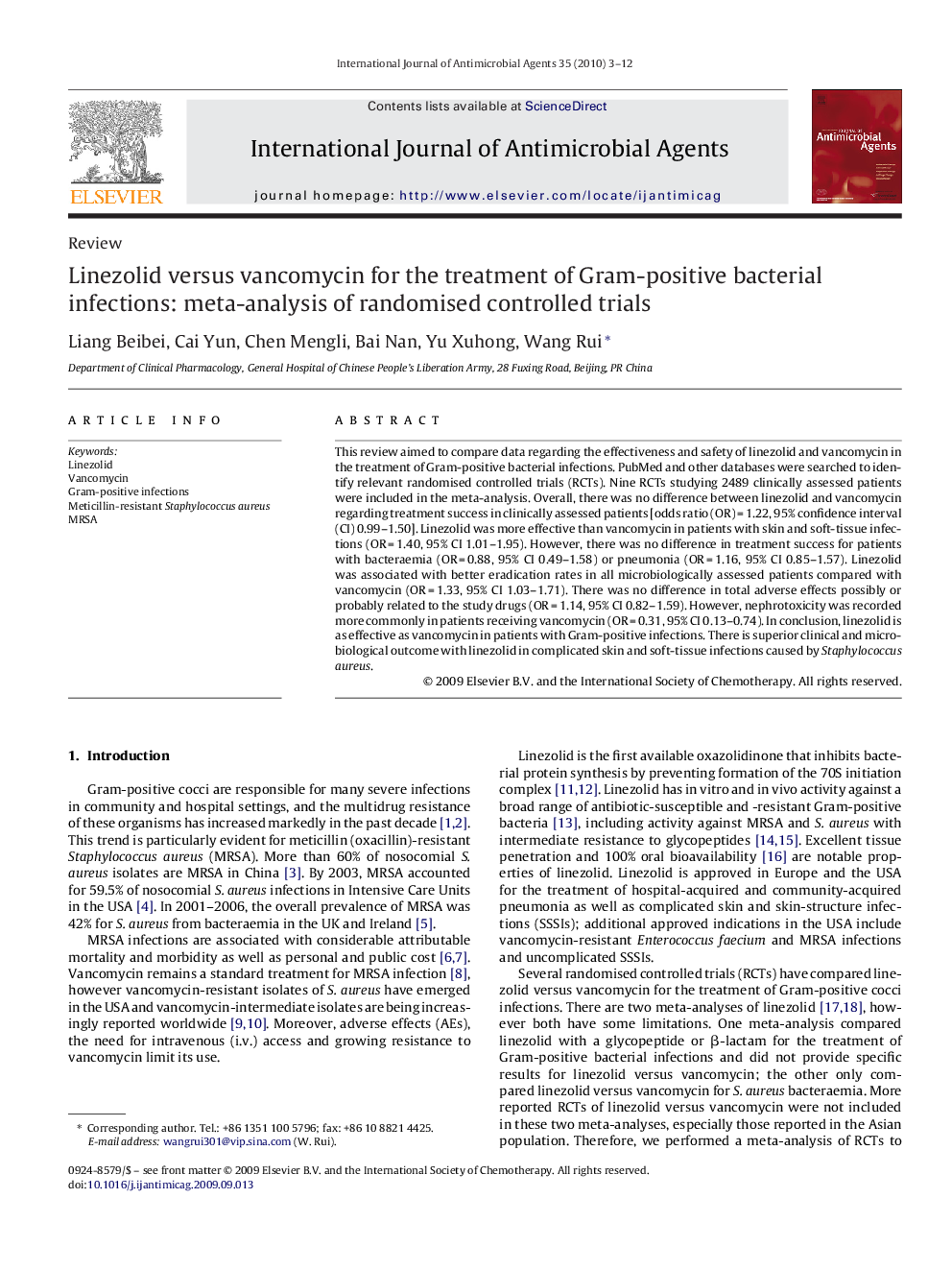| Article ID | Journal | Published Year | Pages | File Type |
|---|---|---|---|---|
| 3359999 | International Journal of Antimicrobial Agents | 2010 | 10 Pages |
This review aimed to compare data regarding the effectiveness and safety of linezolid and vancomycin in the treatment of Gram-positive bacterial infections. PubMed and other databases were searched to identify relevant randomised controlled trials (RCTs). Nine RCTs studying 2489 clinically assessed patients were included in the meta-analysis. Overall, there was no difference between linezolid and vancomycin regarding treatment success in clinically assessed patients [odds ratio (OR) = 1.22, 95% confidence interval (CI) 0.99–1.50]. Linezolid was more effective than vancomycin in patients with skin and soft-tissue infections (OR = 1.40, 95% CI 1.01–1.95). However, there was no difference in treatment success for patients with bacteraemia (OR = 0.88, 95% CI 0.49–1.58) or pneumonia (OR = 1.16, 95% CI 0.85–1.57). Linezolid was associated with better eradication rates in all microbiologically assessed patients compared with vancomycin (OR = 1.33, 95% CI 1.03–1.71). There was no difference in total adverse effects possibly or probably related to the study drugs (OR = 1.14, 95% CI 0.82–1.59). However, nephrotoxicity was recorded more commonly in patients receiving vancomycin (OR = 0.31, 95% CI 0.13–0.74). In conclusion, linezolid is as effective as vancomycin in patients with Gram-positive infections. There is superior clinical and microbiological outcome with linezolid in complicated skin and soft-tissue infections caused by Staphylococcus aureus.
